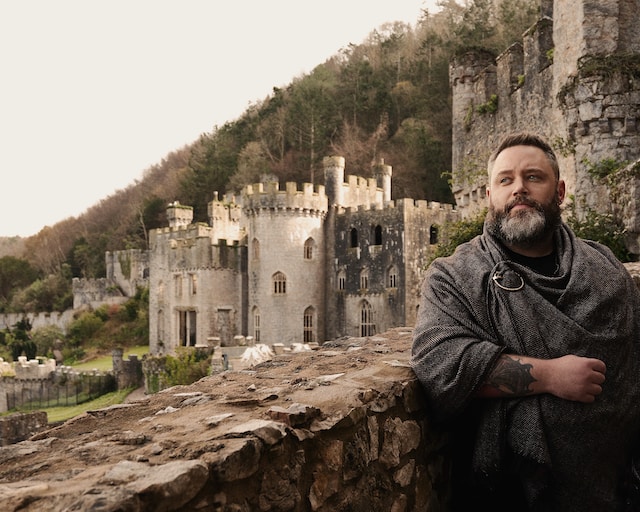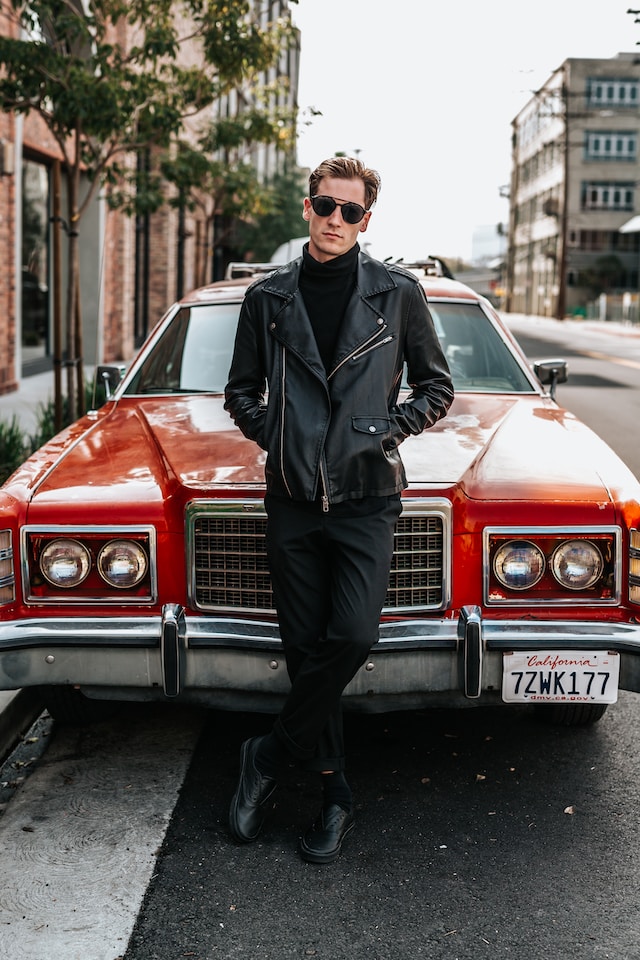
Throughout history, men’s fashion has evolved in fascinating ways, reflecting societal changes, cultural influences, and individual expressions. From ancient civilizations to the modern-day, the evolution of men’s attire has been a captivating journey, not only emphasizing style but also revealing significant aspects of human civilization. This article explores the remarkable path followed by men’s fashion, from the time of togas to the era of tuxedos.
Ancient and Classical Periods
Ancient civilizations, such as the Greeks and Romans, laid the foundation for men’s fashion. The toga, a draped garment worn by patricians in Rome, symbolized social status and played a prominent role in Roman culture. Moving forward in time, the Middle Ages witnessed the emergence of distinctive fashion trends among knights and nobles, showcasing their wealth and power through intricate garments embellished with lavish materials.
Medieval and Renaissance Eras
The medieval and Renaissance eras marked a significant shift in men’s fashion, as the attire became more symbolic and elaborate. During this period, clothing played a vital role in displaying wealth, social status, and adherence to societal norms.
In the Middle Ages, knights and nobles adorned themselves with extravagant garments made from rich fabrics such as velvet, silk, and brocade. These intricately designed garments showcased their elevated position in society. Tunic-like garments called tunics or robes, which were often embellished with fur, gemstones, and gold thread, were common among the upper class. Knights displayed their chivalry by wearing armor, topped with decorative surcoats.

As the Renaissance arrived, men’s fashion embraced a more balanced and refined aesthetic. The doublet, a snug-fitting jacket, took center stage in men’s wardrobes. They were often padded and decorated with intricate embroidery or metal accents. The ruff, a wide collar made of lace or finely pleated fabric, became a popular accessory, adding a touch of elegance to men’s ensembles.
Renaissance men also sported breeches, hose, and codpieces. Breeches, similar to today’s trousers, were snug-fitting and reached down to the knee. Men wore hose, which were often made of silk or wool, underneath their breeches. Codpieces, an unusual accessory by modern standards, were padded pouches that covered the groin area. They evolved from a functional piece to a symbol of virility and masculine prowess.
The Age of Enlightenment
The Age of Enlightenment, which spanned the 18th century, brought forth a significant transformation in men’s fashion. This era prioritized reason, logic, and intellectual pursuits, and this mindset reflected in the clothing choices of the time. The flamboyant excesses of the previous centuries gave way to a more refined and understated aesthetic. The focus shifted from opulence to simplicity and functionality.
Tailcoats and cravats became the epitome of men’s formal wear, exuding an air of sophistication and elegance. These garments were designed with clean lines and structured silhouettes, emphasizing a sense of order and rationality. Alongside the tailcoat, waistcoats became a staple in men’s wardrobes, adding a touch of color and personality to their attire.
The crisp, white cravat replaced elaborate ruffs, offering a more streamlined and polished look. As the Age of Enlightenment swept across Europe, the ideals of the time permeated men’s fashion, reflecting a desire for clarity, rationality, and a departure from the grandiose excesses of the past. This era laid the groundwork for the modern-day suit and set the stage for the evolution of men’s fashion in the centuries to come.
The 19th Century
The 19th century was a time of contrasting fashion styles. The upper classes showcased their refinement through tailored suits, while the working class embraced more relaxed clothing. Custom-made suits with waistcoats became a symbol of sophistication for gentlemen, highlighting their social status and attention to detail.
The Industrial Revolution played a significant role in fashion, as ready-to-wear clothing became more accessible to a broader audience. This period saw the emergence of new materials and manufacturing techniques that revolutionized the way clothes were made. Fashion became more practical and functional, reflecting the changing needs of a rapidly evolving society. The 19th century marked a pivotal moment in men’s fashion, setting the stage for the innovative styles and designs that would follow in the 20th century.
The 20th century
The 20th century brought a whirlwind of changes to men’s fashion. It was a time of exploration and experimentation, where traditional boundaries were shattered. From the stylish Zoot suits of the 1930s to the rebellious styles of the 1960s, fashion knew no limits. The suit, which had become the epitome of professionalism and formal elegance, continued to dominate men’s wardrobes. Crafted with exquisite attention to detail, it represented a symbol of sophistication.

Then there was the tuxedo, the pinnacle of refinement. Its sleek black jacket, cummerbund, and bowtie combination exuded an air of masculine elegance that transcended generations and cultures. As the 20th century progressed, men’s fashion embraced new influences, adapting to the changing times. From the emergence of streetwear to the rise of high fashion, the options for self-expression expanded.
With an array of styles and trends to choose from, men were no longer confined to the boundaries of traditional fashion. The 20th century brought forth an era of innovation and limitless possibilities, shaping the course of men’s fashion as we know it today.
The Contemporary Era
The Contemporary Era of men’s fashion is characterized by a fusion of traditional elements and modern influences. Today, men have a plethora of options to choose from when it comes to their personal style. The tailored suit remains a staple for formal occasions, exuding timeless elegance and refinement. However, the boundaries of what is considered appropriate attire have expanded, allowing for more individual expression and experimentation.
Casual wear has become increasingly popular, with streetwear becoming a significant influence on men’s fashion. From graphic tees and sneakers to denim jackets and jogger pants, the contemporary man embraces comfort and versatility while staying true to his unique sense of style. Accessories such as hats, sunglasses, and statement watches are used to add a touch of personality to an outfit, reflecting the individuality of the wearer.
In this fast-paced world, the influence of technology and social media cannot be ignored. Men’s fashion is more accessible than ever, with style inspiration just a click away. Influencers, bloggers, and fashion-forward individuals share their innovative looks, inspiring men all over the world to experiment with different trends and push the boundaries of traditional fashion.
The Contemporary Era of men’s fashion is defined by a sense of individuality, where men are encouraged to embrace their personal style and make a statement through their clothing choices. Whether it’s a sleek tailored suit or a relaxed streetwear ensemble, the contemporary man has the freedom to express himself authentically through fashion.
Today, men’s fashion continues to evolve, adapting to the ever-changing landscape of trends and influences. From streetwear to high fashion, the options for self-expression within the realm of men’s style are limitless.
Cultural and Social Influences
Men’s fashion has always been influenced by the prevailing cultural and social norms of the time. The way men dress has been shaped by various factors, including geography, religion, and societal expectations. Different regions and cultures have distinctive styles and clothing traditions that reflect their heritage and identity. For example, traditional attire in countries like Japan, India, and Scotland showcases unique craftsmanship and design, with garments tailored to suit specific climates and cultural practices.

Religion has also played a significant role in shaping men’s fashion. Religious beliefs often determine the appropriate attire for ceremonies, rituals, and daily life. For instance, the robes worn by Buddhist monks or the head coverings worn by Muslim men reflect religious and cultural practices.
Moreover, societal expectations and gender roles have influenced men’s fashion throughout history. In many eras, there were specific societal expectations concerning what was considered appropriate attire for men. These expectations were often linked to concepts of masculinity and social status. For example, in the Victorian era, dressing modestly and formally was seen as a sign of refinement and respectability.
In modern times, societal attitudes towards fashion have become more relaxed and inclusive, allowing men to express their individuality and personal style. Social media, fashion influencers, and changing perceptions of masculinity have also contributed to the evolving landscape of men’s fashion. Men are now encouraged to experiment with different styles, mixing traditional and contemporary elements to create unique looks that reflect their personality and values.
Men’s fashion has always been shaped by the cultural and social influences of the time. From regional traditions to religious practices, and from societal expectations to individual expressions, the way men dress tells a captivating story of the ever-changing human civilization.
